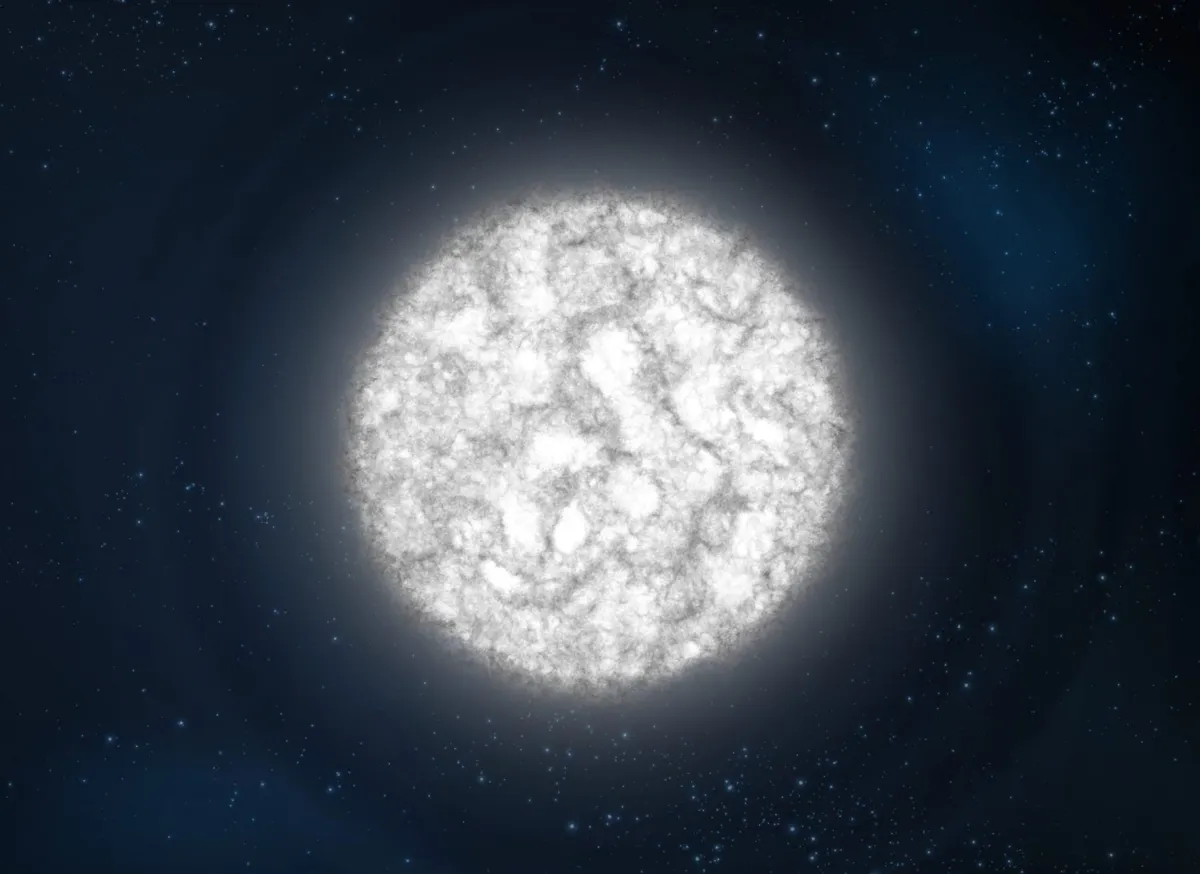White dwarf stars are formed when all but the most massive stars run out of hydrogen fuel for their nuclear fusion and exit the main sequence.
The star swells up as an enormously inflated red giant, puffing off its outer layers into a beautiful nebula of ionised gases.
The core is all that remains of the original star and, as it can no longer support fusion, this ‘white dwarf’ slowly cools over billions of years.

White dwarfs' composition
The majority of white dwarfs are composed of mostly carbon and oxygen, as these are the elements most red giants create towards the end of their lives.
If the progenitor star was nearer eight times more massive than our Sun, however, there’s an extra final step of nuclear fusion, leaving a white dwarf made up of oxygen and neon.
At least, that’s the composition you’d expect a white dwarf to be formed with.
But between about a quarter and a half of them have been found to contain significant amounts of heavy metals.
Their outer layers have become polluted with elements like aluminium, titanium, iron, nickel and copper.
An obvious source of such heavy metals would be one of the star’s inner, rocky planets.
This could happen if a planet’s orbit becomes destabilised into a highly elliptical orbit that plunges it close enough to the white dwarf to be torn apart, sprinkling its outer gas layers.
But observations indicate that many white dwarfs appear to have accumulated metals at a relatively constant rate over billions of years.
This means that rather than swallowing one of their own planets in a single event, they must have been slowly nibbling away at a source of heavier elements.
In order to explain this, you need a reservoir of metals and some mechanism that can not only transport these heavier elements inwards to the central white dwarf, but also do so over very long timescales.

The solution
Dang Pham and Hanno Rein, in the department of astronomy and astrophysics at the University of Toronto, believe that such old, polluted white dwarfs were created by steadily consuming their equivalent of the Oort cloud – a hypothetical region surrounding our Solar System where long-period comets are believed to come from.
They created a simulation of a white dwarf system with its own distant Oort cloud and calculated the rate that the heavier-element-rich bodies would be flung in towards the white dwarf.
The researchers looked at several different scenarios, including the presence of a companion star or
a large gas giant planet that might disrupt the Oort cloud.
What they found was that none of this was necessary.

White dwarfs and comets
Comets could be nudged inwards on a collision course with the white dwarf at a high enough rate by the galactic tidal effect alone.
This is where the spherical shell of the Oort cloud becomes deformed by the gradient of the Milky Way’s own gravitational field.
This is enough to send icy-rocky bodies hurtling inwards, where they can be consumed by the white dwarf over time to match the observed levels of heavier elements.
Tidal effects are rife in the cosmos.
Not just the Moon’s gravity hauling up Earth’s oceans, or moon Io being kept hot and molten as it orbits Jupiter, but here too in the possibility of the weak galactic tide driving a slow but persistent drizzle of metal elements to pollute white dwarfs.
Lewis Dartnell was reading Polluting White Dwarfs with Oort Cloud Comets by Dang Pham and Hanno Rein. Read it online at: arxiv.org/abs/2404.07160.

